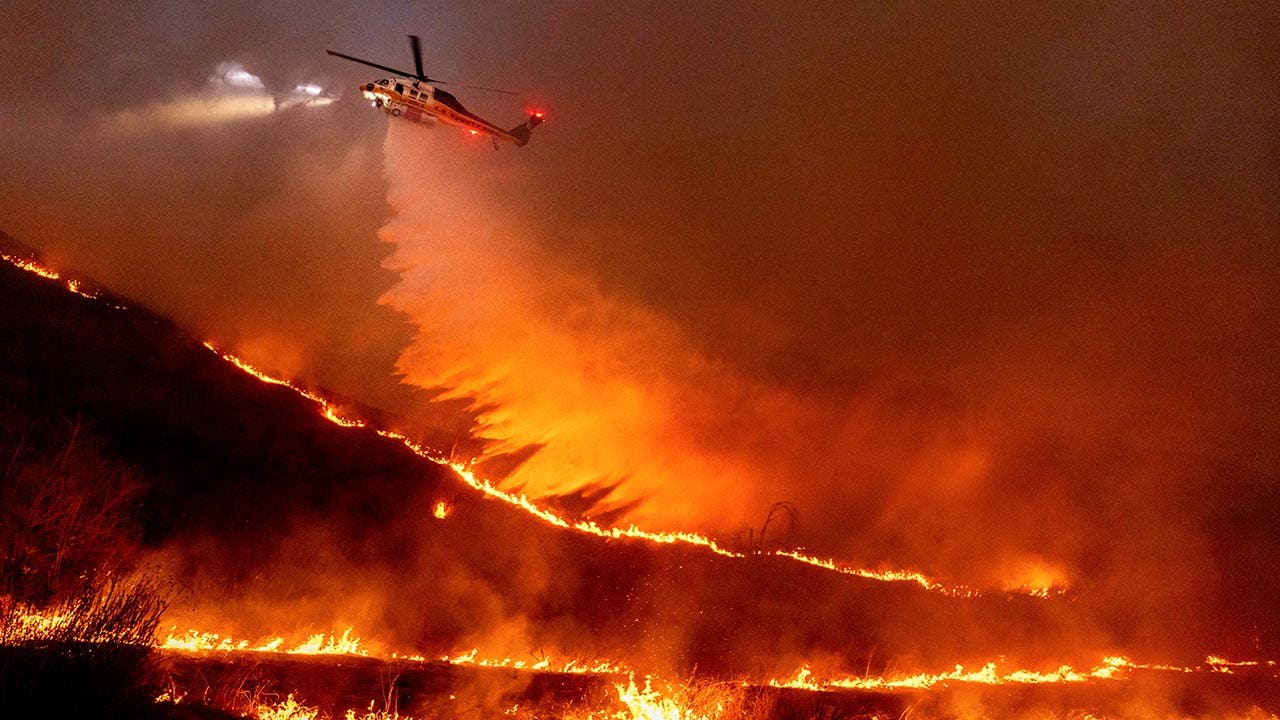The American tropics are uniquely blessed with birds. Thirty-six percent of the world’s 11,000 bird species live in the region south of the border between the United States and Mexico, more than in Asia or Africa.
That diversity is reflected in the national birds chosen to represent the countries of Latin America, from the slight southern lapwing — Uruguay’s avian symbol — to the 30-pound Andean condor, the national bird of four countries. Some birds carry Indigenous cultural importance; others were once ubiquitous in, or are endemic to, their countries.
But an increasingly common characteristic is a decline in their numbers, sometimes even in the nations they represent.
Golden eagle (Mexico)
Every child in Mexico learns the story: During nomadic times, the Aztecs had a prophecy that they should settle in a place where they saw an eagle eating a snake while perched on a cactus. That sighting led to the founding of the Aztec capital Tenochtitlan, later Mexico City.
The golden eagle (Aquila chrysaetos) can be found in Russia, Central Asia, Europe and the Americas. Mexico is the eagle’s southernmost range, according to Ernesto Ruelas Inzunza, an ecologist at the University of Veracruz. Although the bird is featured on items like coins and soccer jerseys, it is endangered in Mexico, and its population is probably shrinking.
Recent estimates suggest that there may be only about 200 adult birds left in Mexico, Dr. Ruelas said, although more formal nationwide surveys need to be conducted.
“It’s a beautiful bird, and it’s well ingrained in our history,” Dr. Ruelas said. “But we don’t see them very often.”
Resplendent quetzal (Guatemala)
Habitat loss is a major factor in the decline of bird populations across the region. Around 13 percent of forest in Latin America and the Caribbean has been lost in the last 30 years, primarily because of agriculture and cattle ranching. Brazil accounts for most of that loss, but Guatemala alone lost more than 26 percent of its forests 1.25 million hectares — from 1990 to 2020.
That change has had a stark effect on Guatemala’s national bird, the resplendent quetzal (Pharomachrus mocinno), which breeds in high-elevation cloud forests and feeds in lower-elevation forests.
The quetzal’s iridescent green feathers adorned Quetzalcoatl, the serpent-headed god of the Aztecs and the Maya, and were once used as money; the currency of modern Guatemala is called the quetzal. But the quetzal’s habitat requirements and reliance on varieties of avocado make it vulnerable to climate change and deforestation. The International Union for Conservation of Nature has classified the resplendent quetzal’s population as near threatened.
Andean condor (Bolivia, Chile, Colombia, Ecuador)
Across most of the world, the Andean condor (Vultur gryphus) is identified by a version of its Quechua name, kuntur. It is one of the largest flying birds, has a 10-foot wingspan, and weighs up to 33 pounds. Bolivia and Chile are strongholds for the species, but the population as a whole is vulnerable, and the condor barely has a presence in Colombia and Ecuador. A survey in 2015 by the Andean Condor Foundation estimated that only around 100 adults remained in Ecuador.
Despite the bird’s importance in some Indigenous cultures — it is thought that condors carried souls to heaven — it is hunted and poisoned, typically by farmers concerned about their livestock. Condors compete with feral dogs to find carrion, and have sometimes resorted to killing baby cows.
“That’s a big problem with raptors in places where local communities are close by,” said Eliana Montenegro, a conservation officer based in Ecuador with BirdLife International.
The intimidating features and size of raptors, such as the golden eagle, the condor and Panama’s harpy eagle (Harpia harpyja), make them charismatic national symbols but can also attract human persecution.
Southern lapwing (Uruguay)
Rufous hornero (Argentina)
The southern lapwing (Vanellus chilensis) and the rufous hornero (Furnarius rufus), both of which prefer grasslands and pastures, have actually benefited from the conversion of woodlands into farms and cattle ranches.
Common birds like these still have a role in mobilizing support for conservation efforts, said Luis Miguel Renjifo, a conservation biologist at the Pontifical Javeriana University.
Most Argentines can easily find their national bird, the hornero — named for the oven like clay nests, or horneros, it builds — even in the parks of Buenos Aires. “They get people excited,” Dr. Renjifo said. “It brings that connection between birds and people.”
Scarlet macaw (Honduras)
With so many beautiful birds in Latin America, poaching for the international pet market has become a significant problem, including for the scarlet macaw (Ara macao).
The ancient Maya believed that macaws could travel between Earth and heaven, and their colorful feathers adorned the Maya and Aztec elite. Today those feathers — as well as the bird’s tolerance for captivity and its ability to mimic human voices — make macaws a desirable pet that can fetch upward of $3,000.
Populations are dwindling in much of Central America, and the scarlet macaw is vulnerable in Honduras. But it has made some recent progress in the region, thanks to forest preservation efforts; programs like Macaw Mountain, which combines tourism with conservation; and arrangements, like one in the Mosquitia region, that pay former hunters to become stewards.
But those accomplishments remain tenuous.
Can a symbol galvanize conservation efforts?
Understanding species population trends requires long-term data collection, and conservation efforts can take decades to yield results.
“It has required resources that have not been available in a lot of the countries where most biodiversity exists,” said Viviana Ruiz-Gutierrez, co-director of the Center for Avian Population Studies at the Cornell Lab of Ornithology.
And the decline of a species in one country is less likely to attract international funding if the bird’s global population is not concerning.
Still, Dr. Ruelas and other scientists hope that the local decline of bird species, especially those that are national symbols, will prompt the public to participate in monitoring efforts or support research and conservation policies.
“A symbol of national identity should be something that makes us work together,” Dr. Ruelas said.















































